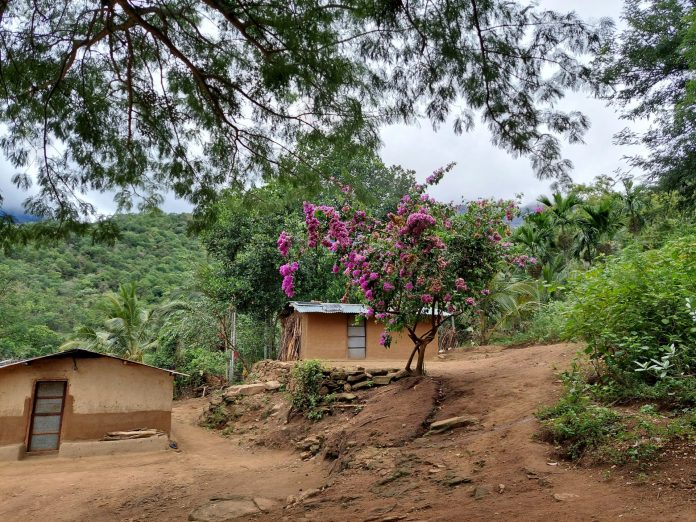For hundreds of millions in rural India, a specialist doctor is a world away. A trip to the city is expensive, time-consuming, and often impossible. But what if the specialist could come to the village? Not in person, but as an algorithm.
A Crisis of Distance: The Urban-Rural Healthcare Chasm
The story of healthcare in India is one of stark contrasts. On one hand, it has world-class urban hospitals and a booming medical tourism industry. On the other, the vast majority of its population living in rural areas has little to no access to specialist care. The numbers paint a clear picture: while nearly 70% of India’s population is rural, this region is served by less than 30% of its doctors. This isn’t just an inconvenience; it’s a public health crisis. Easily treatable chronic conditions go undiagnosed until they become critical. Preventable diseases lead to lifelong disabilities. The economic toll on families who must sacrifice wages and savings for a single, long-distance trip to a city doctor is immense. This chasm of accessibility has, for decades, seemed insurmountable. But now, artificial intelligence is emerging as a powerful bridge.
The ‘Force Multiplier’: Arming Local Health Workers with AI
The solution is not about building more hospitals or trying to replace doctors. It’s about empowerment. The current revolution in rural health-tech is built on a “force multiplier” model, designed to dramatically increase the capabilities of the existing, trusted network of community health workers. These on-the-ground heroes are being armed with simple, powerful AI diagnostic tools that run on a basic smartphone. This model relies on a seamless, user-friendly digital platform that connects the health worker’s device to the powerful AI engine in the cloud. The design of such platforms is a specialized skill. The principles of creating an engaging and stable user experience are universal across the digital world. To get an idea of the complexity involved, one can read more about the architecture of modern entertainment systems. For the rural health initiative, however, this platform’s stability is not about entertainment; it is the critical link that delivers life-saving diagnostic information to the point of care.
From Sound Waves to Sight: The New Diagnostic Frontier
The power of these new tools lies in their ability to turn a simple smartphone into a set of advanced diagnostic “senses.” For sight, a low-cost lens attachment can transform a phone’s camera into a retinal scanner. A health worker can take a picture of a patient’s eye, and an AI trained on millions of images can detect signs of diabetic retinopathy-a leading cause of blindness-with superhuman accuracy. For hearing, the phone’s microphone becomes a digital stethoscope. Startups are developing AI that can analyze the sound of a person’s breathing or coughing to screen for respiratory illnesses like tuberculosis and pneumonia. The AI listens for subtle acoustic signatures that are imperceptible to the human ear but are strong indicators of a specific disease. These tools don’t provide a final diagnosis, but they are incredibly powerful screening mechanisms that can flag high-risk individuals for follow-up testing instantly.
The Economic Diagnosis: Impact on Household Savings and Productivity
The impact of early, accessible diagnosis is not just medical; it’s profoundly economic. For a low-income rural family, a single trip to a city hospital for a specialist consultation can be a catastrophic financial event. It involves the cost of travel, lost wages for both the patient and a family member, and the cost of the consultation itself. It can wipe out a family’s entire savings. By bringing preliminary diagnosis to the village, the AI Vaidya prevents this. It identifies who truly needs to make that expensive journey and who can be treated locally. For chronic conditions like diabetes, early detection of complications can prevent the need for much more expensive treatments down the line. A healthier village is also a more productive one. By keeping the local workforce healthy and avoiding preventable disabilities, these tools have a direct positive impact on the economic output and resilience of the entire community.
Overcoming the Hurdles: Trust, Training, and Connectivity
Implementation of this technology does not come without its problems. Trust is the first obstacle. Villagers are used to human doctors and the concept of a phone that makes a diagnosis may be skeptically received. That is why the role of the local health worker is so crucial he or she is the human bridge who is trusted to the new technology. The second problem is training. The apps should be very basic and user-friendly and the health workers should get the appropriate training to know how to use the tools appropriately and learn the limitations. The last problem is connectivity. Most of the villages are in remote areas and with uneven or nonexistent internet access. In a bid to curb this, most of these AI tools are currently being developed to operate offline. The app is able to track and process the data on the device itself, as only later, when one has a connection, it will be synced in the cloud.
Conclusion: A Prescription for a More Equitable Future
Artificial intelligence will not be a silver bullet to the healthcare issues. However, in the rural Indian context, it has become a strong prescription to the crisis of access. The AI Vaidya is opening up the knowledge of specialists by enabling local health workers to have the same level of high-quality diagnostic tools as specialists. It is ending the cycle of avoidable morbidity and disastrous health spending. It is not only the tale of smart algorithms, but a paradigm shift in the way healthcare can be provided. It is an optimistic vision of the future where the potential to receive a life-saving diagnosis in time no longer depends on where you are lucky enough to reside, but on your access to powerful, easy-to-hold technologies.



 Bitcoin
Bitcoin  Ethereum
Ethereum  Tether
Tether  XRP
XRP  USDC
USDC  TRON
TRON  Lido Staked Ether
Lido Staked Ether  Cardano
Cardano  Avalanche
Avalanche  Toncoin
Toncoin  Solana
Solana